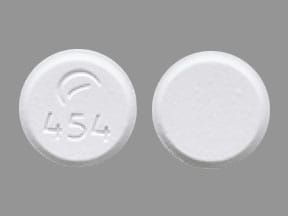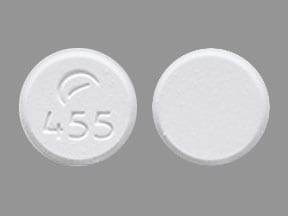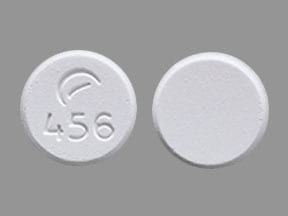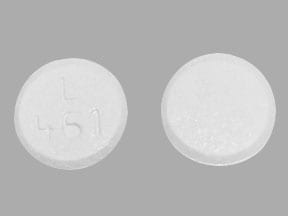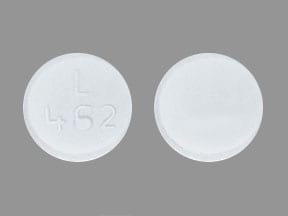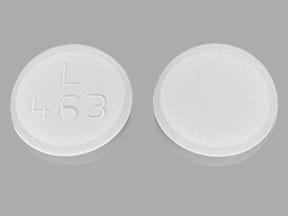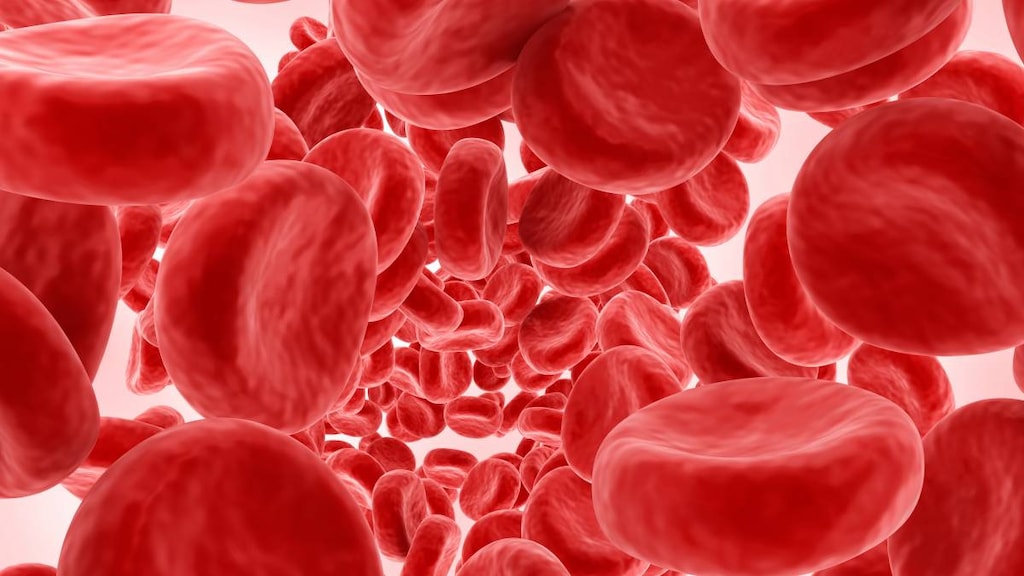Boxed Warning
Renal failure:
Deferasirox can cause acute renal failure and death, particularly in patients with comorbidities and those who are in the advanced stages of their hematologic disorders. Evaluate baseline renal function prior to starting or increasing deferasirox dosing in all patients. Deferasirox is contraindicated in adult and pediatric patients with eGFR less than 40 mL/min/1.73 m2. Measure serum creatinine in duplicate prior to initiation of therapy. Monitor renal function at least monthly. For patients with baseline renal impairment or increased risk of acute renal failure, monitor renal function weekly for the first month, and then at least monthly. Reduce the starting dose in patients with preexisting renal disease. During therapy, increase the frequency of monitoring and modify the dose for patients with an increased risk of renal impairment, including use of concomitant nephrotoxic drugs, and pediatric patients with volume depletion or overchelation.
Hepatic failure:
Deferasirox can cause hepatic injury, including hepatic failure and death. Measure serum transaminases and bilirubin in all patients prior to initiating treatment, every 2 weeks during the first month, and at least monthly thereafter. Avoid use of deferasirox in patients with severe (Child-Pugh class C) hepatic impairment and reduce the dose in patients with moderate (Child-Pugh class B) hepatic impairment.
Gastrointestinal hemorrhage:
Deferasirox can cause GI hemorrhages, which may be fatal, especially in elderly patients who have advanced hematologic malignancies and/or low platelet counts. Monitor patients and discontinue deferasirox for suspected GI ulceration or hemorrhage.
Dosage Forms
Excipient information presented when available (limited, particularly for generics); consult specific product labeling. [DSC] = Discontinued product
Packet, Oral:
Jadenu Sprinkle: 90 mg (1 ea, 30 ea); 180 mg (1 ea, 30 ea); 360 mg (1 ea, 30 ea)
Tablet, Oral:
Jadenu: 90 mg, 180 mg, 360 mg
Generic: 90 mg, 180 mg [DSC], 360 mg
Tablet Soluble, Oral:
Exjade: 125 mg, 250 mg, 500 mg
Generic: 125 mg, 250 mg, 500 mg
Pharmacology
Mechanism of Action
Deferasirox is an iron chelating agent that selectively binds iron, forming a complex that is excreted primarily through the feces.
Pharmacokinetics/Pharmacodynamics
Distribution
Adults: 14.37 ± 2.69 L
Metabolism
Hepatic via glucuronidation by UGT1A1 (primarily) and UGT1A3; minor oxidation by CYP450; undergoes enterohepatic recirculation
Excretion
Feces (84%); urine (8%)
Time to Peak
Plasma: Tablets and tablets for oral suspension: ~1.5 to 4 hours
Half-Life Elimination
8 to 16 hours
Protein Binding
~99% to serum albumin
Use in Specific Populations
Special Populations: Renal Function Impairment
Patients (pediatric and adult) with myelodysplastic syndromes (MDS) and eGFR 40 to 60 mL/minute/1.73 m2 had ~50% higher mean deferasirox trough levels compared to patients with MDS and eGFR >60 mL/minute/1.73 m2.
Special Populations: Hepatic Function Impairment
In a single dose (20 mg/kg) study deferasirox exposure was increased in patients with hepatic impairment compared to patients with normal hepatic function. The average total (free and bound) AUC increased 16% in patients with mild (Child-Pugh class A) impairment and increased 76% in patients with moderate (Child-Pugh class B) impairment, compared to patients with normal hepatic function.
Special Populations: Children
Systemic exposure has been shown to be less in pediatric patients (2 to 16 years) compared to adults; in children 2 to 6 years, exposure was reduced by ~50% compared to adults; however, results of safety and efficacy trials using the same dose were similar in pediatric and adult patients.
Special Populations: Gender
Clearance is moderately lower (by 17.5%) in females compared to males.
Use: Labeled Indications
Chronic iron overload due to blood transfusions: Treatment of chronic iron overload caused by blood transfusions (transfusional hemosiderosis) in patients ≥2 years of age
Chronic iron overload in nontransfusion-dependent thalassemia syndromes: Treatment of chronic iron overload in patients ≥10 years of age with nontransfusion-dependent thalassemia syndromes and with a liver iron concentration of at least 5 mg of iron per gram of liver dry weight (mg Fe/g dry weight) and a serum ferritin >300 mcg/L
Limitations of use: Safety and efficacy of deferasirox in combination with other iron chelation therapies have not been established.
Contraindications
Known hypersensitivity to deferasirox or any component of the formulation; eGFR <40 mL/minute/1.73 m2; poor performance status; high-risk myelodysplastic syndromes; advanced malignancies; platelet counts <50,000/mm3
Canadian labeling: Additional contraindications (not in the US labeling): MDS patients with <1 year life expectancy; CrCl <60 mL/minute; patients with other hematological and nonhematological malignancies who are not expected to benefit from chelation therapy (due to rapid progression of their disease)
Dosage and Administration
Dosing: Adult
Note: Use the minimum effective dose to achieve a trend of decreasing ferritin and to maintain iron burden in the target range. Calculate dose to the nearest whole tablet size or nearest whole granules packet.
Chronic iron overload due to blood transfusions: Oral: Note: Treatment should only be initiated with evidence of chronic iron overload (ie, transfusion of ≥100 mL/kg of packed red blood cells [eg, ≥20 units for a 40 kg individual] and serum ferritin consistently >1,000 mcg/L). Evaluate the need for ongoing therapy in patients whose conditions no longer require regular blood transfusions.
Exjade:
Initial: 20 mg/kg once daily
Maintenance: Adjust dose every 3 to 6 months based on serum ferritin trends; adjust by 5 or 10 mg/kg/day; titrate to individual response and treatment goals. In patients not adequately controlled with 30 mg/kg/day, doses up to 40 mg/kg/day may be considered for serum ferritin levels persistently >2,500 mcg/L and not decreasing over time (doses >40 mg/kg/day are not recommended). If serum ferritin falls to <1,000 mcg/L at 2 consecutive visits, consider dose reduction (especially if dose is >25 mg/kg/day). If serum ferritin falls to <500 mcg/L, interrupt therapy and continue monitoring monthly.
Jadenu:
Initial: 14 mg/kg once daily
Maintenance: Adjust dose every 3 to 6 months based on serum ferritin trends; adjust by 3.5 or 7 mg/kg/day; titrate to individual response and treatment goals. In patients not adequately controlled with 21 mg/kg/day, doses up to 28 mg/kg/day may be considered for serum ferritin levels persistently >2,500 mcg/L and not decreasing over time (doses >28 mg/kg/day are not recommended). If serum ferritin falls to <1,000 mcg/L at 2 consecutive visits, consider dose reduction (especially if dose is >17.5 mg/kg/day). If serum ferritin falls to <500 mcg/L, interrupt therapy and continue monitoring monthly.
Chronic iron overload in non-transfusion-dependent thalassemia syndromes: Oral: Note: Treatment should only be initiated with evidence of chronic iron overload (hepatic iron concentration ≥5 mg Fe/g dry weight and serum ferritin >300 mcg/L).
Exjade:
Initial: 10 mg/kg once daily. Consider increasing to 20 mg/kg once daily after 4 weeks if baseline hepatic iron concentration is >15 mg Fe/g dry weight.
Maintenance: Dependent upon serum ferritin measurements (monthly) and hepatic iron concentrations (every 6 months):
If serum ferritin is <300 mcg/L: Interrupt therapy and obtain hepatic iron concentration
If hepatic iron concentration:
<3 mg Fe/g dry weight: Interrupt therapy; resume treatment when hepatic iron concentration is >5 mg Fe/g dry weight
3 to 7 mg Fe/g dry weight: Continue treatment at a dose of no more than 10 mg/kg/day
>7 mg Fe/g dry weight: Increase dose up to 20 mg/kg/day; Maximum dose: 20 mg/kg/day
Jadenu:
Initial: 7 mg/kg once daily. Consider increasing to 14 mg/kg once daily after 4 weeks if baseline hepatic iron concentration is >15 mg Fe/g dry weight.
Maintenance: Dependent upon serum ferritin measurements (monthly) and hepatic iron concentrations (every 6 months):
If serum ferritin is <300 mcg/L: Interrupt therapy and obtain hepatic iron concentration
If hepatic iron concentration:
<3 mg Fe/g dry weight: Interrupt therapy; resume treatment when hepatic iron concentration is >5 mg Fe/g dry weight
3 to 7 mg Fe/g dry weight: Continue treatment at a dose of no more than 7 mg/kg/day
>7 mg Fe/g dry weight: Increase dose up to 14 mg/kg/day; Maximum dose: 14 mg/kg/day
Dosage adjustment with concomitant medications: Bile acid sequestrants (eg, cholestyramine, colesevelam, colestipol) or potent UGT inducers (eg, rifampin, phenytoin, phenobarbital, ritonavir): Avoid concomitant use; if coadministration is necessary, consider increasing the initial dose of deferasirox dose by 50%; monitor serum ferritin and clinical response.
Conversion from Exjade to Jadenu: The dose for Jadenu should be ~30% lower
Dosing: Geriatric
Refer to adult dosing.
Dosing: Pediatric
Note: Use the minimum effective dose to achieve a trend of decreasing ferritin and to maintain iron burden in the target range. Deferasirox is available as 2 distinct products (Exjade: Tablets for oral suspension, Jadenu: Tablets and sprinkle sachets) that are not bioequivalent on a mg:mg basis due to bioavailability differences. Calculate dose to the nearest whole tablet or sprinkle sachet size.
Blood transfusion; chronic iron overload: Note: Treatment should only be initiated with evidence of chronic iron overload (ie, transfusion of ≥100 mL/kg of packed RBCs [eg, ≥20 units for a 40 kg individual] and serum ferritin consistently >1,000 mcg/L). Evaluate the need for ongoing therapy in patients whose conditions no longer require regular blood transfusions.
Exjade (oral tablet for suspension): Children ≥2 years and Adolescents: Oral:
Initial: 20 mg/kg once daily
Titration and maintenance: Adjust dose every 3 to 6 months based on serum ferritin levels; increase dose by 5 or 10 mg/kg/day increments; usual range: 20 to 30 mg/kg/day; for serum ferritin levels persistently >2,500 mcg/L without evidence of a decreasing trend, may consider a dose of 40 mg/kg/day; doses >40 mg/kg/day are not recommended.
Dosing adjustments:
If the serum ferritin <1,000 mcg/L at 2 consecutive visits: Consider dose reduction, particularly if dose is >25 mg/kg/day
If serum ferritin is <500 mcg/L: Interrupt therapy; continue to monitor monthly
Jadenu (oral tablet; sprinkle granules): Children ≥2 years and Adolescents: Oral:
Initial: 14 mg/kg once daily, calculate dose to the nearest whole tablet or sprinkle sachet
Titration and maintenance: Adjust dose every 3 to 6 months based on serum ferritin trends; adjust by 3.5 or 7 mg/kg/day; titrate to individual response and treatment goals. In patients not adequately controlled at a dose of 21 mg/kg/day (eg, serum ferritin levels persistently >2,500 mcg/L and not decreasing over time), then higher doses up to 28 mg/kg/day may be considered; doses >28 mg/kg/day are not recommended).
Dosing adjustment:
If the serum ferritin <1,000 mcg/L at 2 consecutive visits: Consider dose reduction, particularly if dose is >17.5 mg/kg/day
If serum ferritin <500 mcg/L: Interrupt therapy; continue to monitor monthly
Nontransfusion-dependent chronic iron overload; thalassemia syndromes (NTDT): Note: Treatment should only be initiated with evidence of chronic iron overload (liver iron concentration [LIC] ≥5 mg Fe/g dry weight and serum ferritin >300 mcg/L).
Exjade (oral tablet for suspension): Children ≥10 years and Adolescents: Oral:
Initial: 10 mg/kg once daily; after 4 weeks, if baseline hepatic iron concentration was >15 mg Fe/g dry weight, may increase to 20 mg/kg once daily
Maintenance: Dependent upon serum ferritin measurements (monthly) and LIC (every 6 months)
If serum ferritin is <300 mcg/L: Interrupt therapy and obtain LIC
If LIC:
<3 mg Fe/g dry weight: Interrupt therapy; resume treatment when LIC is >5 mg Fe/g dry weight
3 to 7 mg Fe/g dry weight: Continue treatment at a dose ≤10 mg/kg/day
>7 mg Fe/g dry weight: Increase dose to 20 mg/kg/day if not already; maximum daily dose: 20 mg/kg/day
Jadenu (oral tablet, sprinkle granules): Children ≥10 years and Adolescents: Oral:
Initial: 7 mg/kg once daily; after 4 weeks, if hepatic iron concentration was >15 mg Fe/g dry weight, may increase to 14 mg/kg once daily
Maintenance: Dependent upon serum ferritin measurements (monthly) and LIC (every 6 months)
If serum ferritin is <300 mcg/L: Interrupt therapy and obtain LIC
If LIC:
<3 mg Fe/g dry weight: Interrupt therapy; resume treatment when LIC is >5 mg Fe/g dry weight
3 to 7 mg Fe/g dry weight: Continue treatment at a dose ≤7 mg/kg/day
>7 mg Fe/g dry weight: Increase dose to 14 mg/kg/day if not already; maximum daily dose: 14 mg/kg/day
Dosing conversion from Exjade to Jadenu: The dose for Jadenu should be ~30% lower than Exjade (doses rounded to the nearest whole tablet or sachet).
Dosing adjustment with concomitant bile acid sequestrants (eg, cholestyramine, colesevelam, colestipol) or potent UGT inducers (eg, rifampin, phenytoin, phenobarbital, ritonavir): Children ≥2 years and Adolescents: Oral (all dosage forms): Avoid concomitant use; if coadministration necessary, consider increasing the initial deferasirox dose by 50%; monitor serum ferritin and clinical response.
Dosing adjustment for toxicity: Children ≥2 years and Adolescents:
Auditory disturbances: Consider dose reduction or treatment interruption
Bone marrow suppression: Interrupt treatment; may reinitiate once cause of cytopenia has been determined; contraindicated if platelet count <50,000/mm3
Dermatologic toxicity:
Rash (severe): Interrupt treatment; may reintroduce at a lower dose (with future dose escalation) and short-term oral corticosteroids
Severe skin reaction (Stevens-Johnson syndrome, erythema multiforme): Discontinue treatment; do not reinitiate
Gastrointestinal: Discontinue treatment for suspected GI ulceration or hemorrhage.
Hearing loss or visual disturbance: Consider dose reduction or treatment interruption
Dosing: Adjustment for Toxicity
Auditory disturbances: Consider dose reduction or treatment interruption.
Bone marrow suppression: Interrupt treatment; may reinitiate once cause of cytopenia has been determined; use contraindicated if platelet count <50,000/mm3
Dermatologic toxicity:
Rash (severe): Interrupt treatment; may reintroduce at a lower dose (with future dose escalation) and short-term oral corticosteroids.
Severe skin reaction (Stevens-Johnson syndrome, toxic epidermal necrolysis, erythema multiforme, drug reaction with eosinophilia and systemic symptoms [DRESS]): Discontinue treatment; do not reinitiate.
Gastrointestinal: Discontinue treatment for suspected GI ulceration or hemorrhage.
Hypersensitivity (severe): Discontinue deferasirox (and manage appropriately).
Visual disturbance: Consider dose reduction or treatment interruption.
Administration
Oral:
Do not take simultaneously with aluminum-containing antacids.
Granules (Jadenu): Administer on an empty stomach or with a light meal, at the same time each day. Sprinkle granules on soft food (eg, yogurt or applesauce) immediately prior to administration.
Tablets (Jadenu): Swallow with water or other liquids at the same time each day. Administer on an empty stomach or with a light meal (contains <7% fat content and ~250 calories). For patients who have difficulty swallowing whole tablets, may crush tablets and mix with soft foods (eg, yogurt, applesauce); consume entire mixture immediately after preparation (do not store for future use). Commercial crushers with serrated surfaces should be avoided for crushing a single 90 mg tablet.
Tablets for suspension (Exjade): Administer tablets by making an oral suspension; do not chew or swallow tablets whole. Completely disperse tablets in water, orange juice, or apple juice (use 105 mL for total doses <1 g; 210 mL for doses ≥1 g); stir to form a fine suspension and drink entire contents. Rinse remaining residue with more fluid; drink. Avoid dispersion of tablets in milk (due to slowed dissolution) or carbonated drinks (due to foaming) (Séchaud 2008). Administer at same time each day on an empty stomach, at least 30 minutes before food.
Dietary Considerations
Tablets for oral suspension: Bioavailability increased variably when taken with food; take on empty stomach 30 minutes before a meal.
Granules and Tablets: Bioavailability decreased slightly (not clinically meaningful) after a low-fat meal and increased after a high fat meal; take on an empty stomach or with a light meal (containing ~250 calories and <7% fat content).
Storage
Store at 20°C to 25°C (68°C to 77°F); excursions permitted to 15°C to 30°C (59°F to 86°F). Protect from moisture.
Deferasirox Images
Drug Interactions
Agomelatine: CYP1A2 Inhibitors (Moderate) may increase the serum concentration of Agomelatine. Monitor therapy
Alosetron: CYP1A2 Inhibitors (Moderate) may increase the serum concentration of Alosetron. Management: Avoid concomitant use of alosetron and moderate CYP1A2 inhibitors whenever possible. If combined use is necessary, monitor for increased alosetron effects/toxicities. Consider therapy modification
Aluminum Hydroxide: May diminish the therapeutic effect of Deferasirox. Avoid combination
Amodiaquine: CYP2C8 Inhibitors (Moderate) may increase the serum concentration of Amodiaquine. Avoid combination
Anticoagulants: May enhance the adverse/toxic effect of Deferasirox. Specifically, the risk for GI ulceration/irritation or GI bleeding may be increased. Monitor therapy
Bendamustine: CYP1A2 Inhibitors (Moderate) may increase the serum concentration of Bendamustine. Management: Consider alternatives to moderate CYP1A2 inhibitors during therapy with bendamustine due to the potential for increased bendamustine plasma concentrations and increased bendamustine toxicity. Consider therapy modification
Bile Acid Sequestrants: May decrease the serum concentration of Deferasirox. Management: Avoid combination when possible; if the combination must be used, consider a 50% increase in initial deferasirox dose, with monitoring of serum ferritin concentrations and clinical responses to guide further dosing. Consider therapy modification
Bisphosphonate Derivatives: May enhance the adverse/toxic effect of Deferasirox. Specifically, the risk for GI ulceration/irritation or GI bleeding may be increased. Monitor therapy
Bromazepam: CYP1A2 Inhibitors (Moderate) may increase the serum concentration of Bromazepam. Monitor therapy
Busulfan: Deferasirox may increase the serum concentration of Busulfan. Management: Discontinue deferasirox 2 to 3 days (approximately 5 half-lives) before initiation of busulfan. If combined, monitor for increased busulfan concentrations and effects. Decreased busulfan doses may be required during concomitant use. Consider therapy modification
Caffeine and Caffeine Containing Products: CYP1A2 Inhibitors (Moderate) may increase the serum concentration of Caffeine and Caffeine Containing Products. Monitor therapy
ClomiPRAMINE: CYP1A2 Inhibitors (Moderate) may increase the serum concentration of ClomiPRAMINE. Monitor therapy
CloZAPine: CYP1A2 Inhibitors (Moderate) may increase the serum concentration of CloZAPine. Monitor therapy
Corticosteroids: May enhance the adverse/toxic effect of Deferasirox. Specifically, the risk for GI ulceration/irritation or GI bleeding may be increased. Exceptions: Beclomethasone (Nasal); Budesonide (Nasal); Ciclesonide (Nasal); Desonide; DexAMETHasone (Ophthalmic); Difluprednate; Flunisolide (Nasal); Fluocinolone (Ophthalmic); Fluticasone (Nasal); Hydrocortisone (Ophthalmic); Loteprednol; Mometasone (Nasal); PrednisoLONE (Ophthalmic); Triamcinolone (Nasal); Triamcinolone (Ophthalmic). Monitor therapy
Corticosteroids (Systemic): May enhance the adverse/toxic effect of Deferasirox. Specifically, the risk for GI ulceration/irritation or GI bleeding may be increased. Monitor therapy
CYP3A4 Substrates (High risk with Inducers): Deferasirox may decrease the serum concentration of CYP3A4 Substrates (High risk with Inducers). Monitor therapy
Dabrafenib: CYP2C8 Inhibitors (Moderate) may increase the serum concentration of Dabrafenib. Monitor therapy
Dasabuvir: CYP2C8 Inhibitors (Moderate) may increase the serum concentration of Dasabuvir. Monitor therapy
Desloratadine: CYP2C8 Inhibitors (Moderate) may increase the serum concentration of Desloratadine. Monitor therapy
DULoxetine: CYP1A2 Inhibitors (Moderate) may increase the serum concentration of DULoxetine. Monitor therapy
Enzalutamide: CYP2C8 Inhibitors (Moderate) may increase the serum concentration of Enzalutamide. Monitor therapy
Fosphenytoin: May decrease the serum concentration of Deferasirox. Management: Avoid combination when possible; if the combination must be used, consider a 50% increase in initial deferasirox dose, with monitoring of serum ferritin concentrations and clinical responses to guide further dosing. Consider therapy modification
Melatonin: CYP1A2 Inhibitors (Moderate) may increase the serum concentration of Melatonin. Monitor therapy
Nonsteroidal Anti-Inflammatory Agents: May enhance the adverse/toxic effect of Deferasirox. Specifically, the risk for GI ulceration/irritation or GI bleeding may be increased. Monitor therapy
OLANZapine: CYP1A2 Inhibitors (Moderate) may increase the serum concentration of OLANZapine. Monitor therapy
Ombitasvir, Paritaprevir, Ritonavir, and Dasabuvir: CYP2C8 Inhibitors (Moderate) may increase the serum concentration of Ombitasvir, Paritaprevir, Ritonavir, and Dasabuvir. Specifically, the concentrations of the dasabuvir component may be increased. Monitor therapy
PACLitaxel (Conventional): CYP2C8 Inhibitors (Moderate) may increase the serum concentration of PACLitaxel (Conventional). Monitor therapy
PACLitaxel (Protein Bound): CYP2C8 Inhibitors (Moderate) may increase the serum concentration of PACLitaxel (Protein Bound). Monitor therapy
Pentoxifylline: CYP1A2 Inhibitors (Moderate) may increase the serum concentration of Pentoxifylline. Monitor therapy
PHENobarbital: May decrease the serum concentration of Deferasirox. Management: Avoid combination when possible; if the combination must be used, consider a 50% increase in initial deferasirox dose, with monitoring of serum ferritin concentrations and clinical responses to guide further dosing. Consider therapy modification
Phenytoin: May decrease the serum concentration of Deferasirox. Management: Avoid combination when possible; if the combination must be used, consider a 50% increase in initial deferasirox dose, with monitoring of serum ferritin concentrations and clinical responses to guide further dosing. Consider therapy modification
Pioglitazone: CYP2C8 Inhibitors (Moderate) may increase the serum concentration of Pioglitazone. Monitor therapy
Pirfenidone: CYP1A2 Inhibitors (Moderate) may increase the serum concentration of Pirfenidone. Management: Avoid concomitant use of pirfenidone and moderate CYP1A2 inhibitors whenever possible. If combined, decrease the pirfenidone dose to 1,602 mg per day (534 mg three times daily) and monitor for increased pirfenidone toxicities. Consider therapy modification
Pomalidomide: CYP1A2 Inhibitors (Moderate) may increase the serum concentration of Pomalidomide. Monitor therapy
Propranolol: CYP1A2 Inhibitors (Moderate) may increase the serum concentration of Propranolol. Monitor therapy
Ramelteon: CYP1A2 Inhibitors (Moderate) may increase the serum concentration of Ramelteon. Monitor therapy
Ramosetron: CYP1A2 Inhibitors (Moderate) may increase the serum concentration of Ramosetron. Monitor therapy
Rasagiline: CYP1A2 Inhibitors (Moderate) may increase the serum concentration of Rasagiline. Management: Limit rasagiline dose to 0.5 mg once daily in patients taking moderate CYP1A2 inhibitors. Consider therapy modification
Repaglinide: CYP2C8 Inhibitors (Moderate) may increase the serum concentration of Repaglinide. Monitor therapy
RifAMPin: May decrease the serum concentration of Deferasirox. Management: Avoid combination when possible; if the combination must be used, consider a 50% increase in initial deferasirox dose, with monitoring of serum ferritin concentrations and clinical responses to guide further dosing. Consider therapy modification
Ritonavir: May decrease the serum concentration of Deferasirox. Management: Avoid combination when possible; if the combination must be used, consider a 50% increase in initial deferasirox dose, with monitoring of serum ferritin concentrations and clinical responses to guide further dosing. Consider therapy modification
ROPINIRole: CYP1A2 Inhibitors (Moderate) may increase the serum concentration of ROPINIRole. Monitor therapy
Ropivacaine: CYP1A2 Inhibitors (Moderate) may increase the serum concentration of Ropivacaine. Monitor therapy
Selexipag: CYP2C8 Inhibitors (Moderate) may increase serum concentrations of the active metabolite(s) of Selexipag. Management: Reduce the selexipag dose to once daily when combined with moderate CYP2C8 inhibitors. Revert back to twice daily selexipag dosing upon stopping the moderate CYP2C8 inhibitor. Consider therapy modification
Tasimelteon: CYP1A2 Inhibitors (Moderate) may increase the serum concentration of Tasimelteon. Monitor therapy
Theophylline Derivatives: CYP1A2 Inhibitors (Moderate) may increase the serum concentration of Theophylline Derivatives. Management: Consider avoidance of this combination. If coadministration is necessary, monitor for increased theophylline serum concentrations and toxicities when combined. Theophylline dose reductions will likely be required. Exceptions: Dyphylline. Consider therapy modification
TiZANidine: CYP1A2 Inhibitors (Moderate) may increase the serum concentration of TiZANidine. Management: If combined use cannot be avoided, initiate tizanidine in adults at 2 mg and increase in 2 to 4 mg increments based on patient response. Monitor for increased effects of tizanidine, including adverse reactions. Consider therapy modification
Treprostinil: CYP2C8 Inhibitors (Moderate) may increase the serum concentration of Treprostinil. Monitor therapy
Adverse Reactions
>10%:
Dermatologic: Skin rash (6% to 11%)
Gastrointestinal: Abdominal pain (21% to 28%), nausea (11% to 23%), vomiting (10% to 21%), diarrhea (5% to 20%)
Genitourinary: Proteinuria (19%)
Renal: Increased serum creatinine (2% to 38%)
1% to 10%:
Cardiovascular: Edema (≤1%)
Central nervous system: Anxiety (≤1%), dizziness (≤1%), fatigue (≤1%), sleep disorder (≤1%)
Dermatologic: Dyschromia (≤1%)
Gastrointestinal: Acute pancreatitis (≤1%), cholelithiasis (≤1%), duodenal ulcer (≤1%), gastric ulcer (≤1%), gastritis (≤1%), gastrointestinal hemorrhage (≤1%)
Hepatic: Increased serum alanine aminotransferase (2% to 8%)
Ophthalmic: Cataract (≤1%), maculopathy (≤1%)
Otic: Hearing loss (including high frequency) (≤1%)
Renal: Renal tubular disease (≤1%)
Respiratory: Pharyngolaryngeal pain (≤1%)
Miscellaneous: Fever (≤1%)
Frequency not defined:
Central nervous system: Headache (Phatak 2010; Vichinsky 2007)
Gastrointestinal: Constipation (Vichinsky 2007)
Hepatic: Increased serum bilirubin (Vichinsky 2007)
Infection: Viral infection (Vichinsky 2007)
Neuromuscular & skeletal: Arthralgia (Vichinsky 2007), back pain (Vichinsky 2007)
Respiratory: Cough (Vichinsky 2007), nasopharyngitis (Vichinsky 2007), pharyngitis (Vichinsky 2007), respiratory tract infection (Vichinsky 2007)
<1%, postmarketing, and/or case reports: Abnormal hepatic function tests, acute renal failure, agranulocytosis, alopecia, anaphylaxis, anemia (worsening), angioedema, DRESS syndrome, drug fever, erythema multiforme, esophagitis, Fanconi syndrome, gastrointestinal perforation, glycosuria, Henoch-Schönlein purpura, hepatic failure, hepatic insufficiency, hepatitis, hyperactivity, hypersensitivity angiitis, hypersensitivity reaction, increased intraocular pressure, increased serum transaminases, infection, insomnia, interstitial nephritis, neutropenia, nontuberculous mycobacterial infection, optic neuritis, renal insufficiency, retinopathy, Stevens-Johnson syndrome, thrombocytopenia, toxic epidermal necrolysis, urticaria, visual disturbance
Warnings/Precautions
Concerns related to adverse effects:
- Auditory disturbances: Decreased hearing and high-frequency hearing loss have been reported (rare) with deferasirox; perform auditory testing prior to initiation and regularly (every 12 months) during use; if abnormalities develop, monitor more closely and consider dose reduction or treatment interruption. Although causality is not established, auditory adverse events may be more frequent among pediatric patients receiving doses >25 mg/kg/day (Exjade) or >17.5 mg/kg/day (Jadenu) when serum ferritin is <1,000 mcg/L.
- Bone marrow suppression: Cytopenias (including agranulocytosis, neutropenia, thrombocytopenia, and worsening anemia) have been reported (some fatal); risk may be increased in patients with preexisting hematologic disorders; monitor blood counts regularly. Interrupt treatment in patients who develop cytopenias; may reinitiate once cause of cytopenia has been determined; use contraindicated if platelet count <50,000/mm3.
- Dermatologic toxicity: May cause skin rash (dose-related); mild to moderate rashes may resolve without treatment interruption; for severe rash, interrupt and consider restarting at a lower dose with dose escalation and oral steroids. Severe and potentially life-threatening skin reactions, including Stevens-Johnson syndrome (SJS), toxic epidermal necrolysis, erythema multiforme, and drug reaction with eosinophilia and systemic symptoms (DRESS), have also been reported. If severe skin reactions are suspected, discontinue immediately and evaluate; do not reintroduce therapy.
- Gastrointestinal events: [US Boxed Warning]: GI hemorrhages (including fatalities) may occur; observed more frequently in elderly patients with advanced hematologic malignancies and/or low platelet counts; discontinue treatment for suspected GI hemorrhage or ulceration. Nonfatal upper GI irritation, hemorrhage, and ulceration (sometimes complicated with GI perforation, including fatalities) have been reported. Use caution with concurrent medications that may increase risk of adverse GI effects (eg, NSAIDs, corticosteroids, anticoagulants, oral bisphosphonates). Monitor patients closely for signs/symptoms of GI ulceration/bleeding.
- Hepatic failure: [US Boxed Warning]: Hepatic injury and failure (including fatalities) may occur. Monitor transaminases and bilirubin at baseline, every 2 weeks for 1 month, then at least monthly thereafter. Avoid use in patients with severe (Child-Pugh class C) hepatic impairment; initial dose reduction is required in patients with moderate (Child-Pugh class B) hepatic impairment. Patients with mild (Child-Pugh class A) or moderate (Child-Pugh class B) impairment may have a higher risk for toxicities. Hepatotoxicity may be more common in patients >55 years. Patients with significant comorbidities (eg, liver cirrhosis and multiorgan failure) may experience hepatic failure more commonly. Acute liver injury and failure, including fatal outcomes, have occurred in pediatric patients. Hepatic failure associated with acute kidney injury has occurred in pediatric patients at risk for overchelation during states of volume depletion. Interrupt treatment if acute liver injury or acute kidney injury are suspected, and during volume depletion. Monitor liver and renal function more frequently in pediatric patients who are receiving 20 to 40 mg/kg/day (Exjade) or 14 to 28 mg/kg/day (Jadenu) when iron burden is approaching normal. Use the minimum effective dose to achieve and maintain a low iron burden. Monitor liver function tests (ALT, AST, and bilirubin) prior to treatment initiation, every 2 weeks during the first month, and monthly thereafter; consider dose reduction or treatment interruption for severe or persistent elevations.
- Hypersensitivity: Hypersensitivity reactions, including severe reactions (anaphylaxis and angioedema) have been reported; onset is usually within the first month of treatment. Discontinue if reaction is severe and do not reintroduce patients with previous hypersensitivity reactions due to risk of anaphylactic shock.
- Ocular disturbances: Lens opacities, cataracts, intraocular pressure elevation, and retinal disorders have been reported (rare) with use; perform ophthalmic testing prior to initiation and regularly (every 12 months) during use; if abnormalities develop, monitor more closely and consider dose reduction or treatment interruption.
- Renal failure: [US Boxed Warning]: Deferasirox may cause acute renal failure and death, particularly in patients with comorbidities and those who are in the advanced stages of their hematologic disorders. Evaluate renal function in all patients at baseline and prior to deferasirox dose increases. Deferasirox is contraindicated in adult and pediatric patients with eGFR <40 mL/min/1.73 m2. Monitor serum creatinine in duplicate prior to treatment initiation and at least monthly. For patients with baseline renal impairment or increased risk of acute renal failure, monitor renal function weekly for the first month, and then at least monthly. Reduce the starting dose in patients with preexisting renal disease. Increase the monitoring frequency during treatment and modify the dose for patients with an increased risk of renal impairment, including use of concomitant nephrotoxic drugs, and pediatric patients with volume depletion or overchelation. Monitor serum creatinine and/or eGFR more frequently if creatinine levels are increasing. Use the minimum effective dose necessary to establish and maintain a low iron burden and monitor renal function frequently. Individualize dose titration based on improvement in renal injury. Initial dose reductions are required in patients with renal impairment (eGFR 40 to 60 mL/min/1.73 m2); use with caution in pediatric patients with eGFR of 40 to 60 mL/minute/1.73 m2. Deferasirox may cause acute kidney injury including renal failure requiring dialysis (with fatal outcomes); based on postmarketing experience, most fatalities have occurred in patients with multiple comorbidities and who were in advanced stages of hematological disorders. In studies, deferasirox-treated patients with no preexisting renal disease experienced dose-dependent mild, nonprogressive increases in serum creatinine and proteinuria. Preexisting renal disease and concomitant use of other nephrotoxic drugs may increase the risk of acute kidney injury. Acute illnesses associated with volume depletion and overchelation may increase the risk of acute kidney injury in pediatric patients. In pediatric patients, small decreases in eGFR may result in increased deferasirox exposure, particularly in younger patients (<7 years of age); without dose reduction or treatment interruption, may result in worsening renal function and further increases in deferasirox exposure. Renal tubular toxicity, including acquired Fanconi Syndrome, has been reported, most commonly in pediatric patients with beta-thalassemia and serum ferritin levels <1,500 mcg/L. Evaluate renal glomerular and tubular function prior to treatment initiation and dose increases. Monitor electrolytes and urinalysis to evaluate renal tubular function. Monitor all patients for changes in eGFR and for renal tubular toxicity weekly during the first treatment month, after treatment modifications, and at least monthly thereafter. Monitor serum ferritin monthly (to evaluate for overchelation). Monitor renal function more frequently in patients with preexisting renal disease or decreased renal function. Interrupt treatment and monitor renal function more frequently in pediatric patients during acute illnesses resulting in volume depletion (eg, diarrhea, vomiting, or prolonged decreased oral intake); to prevent renal injury, promptly correct fluid deficits; resume treatment as appropriate when oral intake and volume status are normal (based on renal function assessment).
Concurrent drug therapy issues:
- Drug-drug interactions: Potentially significant interactions may exist, requiring dose or frequency adjustment, additional monitoring, and/or selection of alternative therapy. Consult drug interactions database for more detailed information.
Special populations:
- Elderly: Use with caution due to the higher incidence of toxicity (eg, hepatotoxicity) and fatal events during use; monitor elderly patients closely.
- Pediatrics: Deferasirox is associated with serious and fatal adverse reactions in pediatric patients, usually associated with volume depletion or with continued doses of 20 to 40 mg/kg/day (Exjade) or 14 to 28 mg/kg/day (Jadenu) when body iron burden was approaching or in the normal range. Interrupt treatment in pediatric patients with transfusional iron overload with acute illnesses which may cause volume depletion (eg, diarrhea, vomiting, prolonged decreased oral intake) and monitor more frequently; resume treatment as appropriate based on renal function assessment and when oral intake and volume status are normal. For patients with non-transfusion dependent thalassemia syndromes with acute illness which may cause volume depletion, increase monitoring frequency and consider dose interruption until oral intake and volume status are normal. Monitor liver and renal function more frequently during volume depletion and in patients receiving doses of 20 to 40 mg/kg/day (Exjade) or 14 to 28 mg/kg/day (Jadenu) when iron burden is approaching the normal range. Use the minimum effective dose to achieve and maintain a low iron burden.
Dosage form specific issues:
- Lactose: Some formulations may contain lactose.
Other warnings/precautions:
- Other minerals: Deferasirox has a low affinity for binding with zinc and copper, may cause variable decreases in the serum concentration of these trace minerals.
- Overchelation: Overchelation of iron may increase development of renal toxicity with doses >25 mg/kg/day (Exjade) or >17.5 mg/kg/day (Jadenu) while serum ferritin values <1,000 mcg/L. If the serum ferritin falls below 1,000 mcg/L at 2 consecutive visits, consider dose reduction (particularly if the dose is >25 mg/kg/day [Exjade] or >17.5 mg/kg/day [Jadenu]). If the serum ferritin falls to <500 mcg/L, interrupt therapy and continue monthly monitoring. Evaluate the need for ongoing chelation in patients who do not require regular blood transfusions. Use the minimum effective dose to maintain iron burden in the target range. Continued administration of doses of 20 to 40 mg/kg/day (Exjade) or 14 to 28 mg/kg/day (Jadenu) when the body iron burden is approaching or within the normal range is associated with life-threatening adverse events. For patients with NTDT, measure LIC (by liver biopsy or appropriate monitoring method) every 6 months during therapy. Interrupt deferasirox treatment when LIC <3 mg Fe/g dry weight. Monitor serum ferritin monthly; if serum ferritin falls to <300 mcg/L, interrupt deferasirox treatment and obtain confirmatory LIC.
Monitoring Parameters
Transfusional iron overload: Serum ferritin (baseline, monthly thereafter, and with dose increases), CBC with differential (monthly), serum electrolytes (baseline and with dose increases), renal function including serum creatinine (in duplicate at baseline), and eGFR (baseline); monitor weekly during the first month after initiation or modification of therapy and then monthly thereafter and with dose increases; liver function including serum transaminases (ALT/AST) and bilirubin (baseline, every 2 weeks for the first month, then at least monthly, and with dose increases); urinalysis (baseline and with dose increases), including urine protein (monthly); monitor cumulative number of RBC units received.
Non-transfusion-dependent thalassemia syndromes: Liver iron concentration (either by biopsy or other approved method; baseline, then every 6 months and as clinically indicated); serum ferritin (at least 2 measurements 1 month apart prior to treatment and then monthly), CBC with differential (monthly), serum electrolytes (baseline and with dose increases); renal function including serum creatinine (in duplicate at baseline), and eGFR (baseline); monitor weekly during the first month after initiation or modification of therapy and then monthly thereafter and with dose increases; serum transaminases (ALT/AST) and bilirubin (baseline, every 2 weeks for the first month, and then at least monthly and with dose increases); urinalysis (baseline and with dose increases).
All patients: Monitor blood glucose more frequently in patients with diabetes. Auditory examination (baseline, annually, and prior to dose increases); ophthalmic examination (including slit lamp examinations and dilated fundoscopy; baseline, annually, and prior to dose increases). Monitor for changes in eGFR and for signs of renal tubular toxicity weekly during the first month; monitor liver function and renal function more frequently in pediatric patients receiving doses of 20 to 40 mg/kg/day (Exjade) or 14 to 28 mg/kg/day (Jadenu) and when iron burden is approaching normal. Monitor for toxicities more frequently in elderly patients, in pediatric patients experiencing volume depletion or overchelation, and in patients receiving concomitant nephrotoxic drugs. Monitor for signs/symptoms of dermatologic toxicity, GI ulcers, hemorrhage, and /or hypersensitivity.
Pregnancy
Pregnancy Considerations
Information related to the use of deferasirox in pregnant women is limited and, in some cases, treatment was discontinued once pregnancy was discovered (Anastasi 2011; Diamantidis 2016; Fozza 2017; Ricchi 2011; Vini 2011).
Infertility associated with beta-thalassemia may be reversible following deferasirox therapy (Anastasi 2011). Use of hormonal contraceptives may be ineffective in preventing pregnancy; nonhormonal contraception is recommended during deferasirox therapy.
Patient Education
What is this drug used for?
- It is used to get rid of iron when too much is in the body.
Frequently reported side effects of this drug
- Abdominal pain
- Nausea
- Vomiting
- Diarrhea
Other side effects of this drug: Talk with your doctor right away if you have any of these signs of:
- Kidney problems like unable to pass urine, blood in the urine, change in amount of urine passed, or weight gain
- Liver problems like dark urine, fatigue, lack of appetite, nausea, abdominal pain, light-colored stools, vomiting, or yellow skin.
- Bleeding like vomiting blood or vomit that looks like coffee grounds; coughing up blood; blood in the urine; black, red, or tarry stools; bleeding from the gums; abnormal vaginal bleeding; bruises without a reason or that get bigger; or any severe or persistent bleeding
- Infection
- Bowel problems like black, tarry, or bloody stools; fever; mucus in stools; vomiting; vomiting blood; severe abdominal pain; constipation; or diarrhea
- Bruising
- Severe loss of strength and energy
- Trouble hearing
- Hearing loss
- Vision changes
- Rash
- Stevens-Johnson syndrome/toxic epidermal necrolysis like red, swollen, blistered, or peeling skin (with or without fever); red or irritated eyes; or sores in mouth, throat, nose, or eyes
- Signs of a significant reaction like wheezing; chest tightness; fever; itching; bad cough; blue skin color; seizures; or swelling of face, lips, tongue, or throat.
Note: This is not a comprehensive list of all side effects. Talk to your doctor if you have questions.
Consumer Information Use and Disclaimer: This information should not be used to decide whether or not to take this medicine or any other medicine. Only the healthcare provider has the knowledge and training to decide which medicines are right for a specific patient. This information does not endorse any medicine as safe, effective, or approved for treating any patient or health condition. This is only a brief summary of general information about this medicine. It does NOT include all information about the possible uses, directions, warnings, precautions, interactions, adverse effects, or risks that may apply to this medicine. This information is not specific medical advice and does not replace information you receive from the healthcare provider. You must talk with the healthcare provider for complete information about the risks and benefits of using this medicine.
